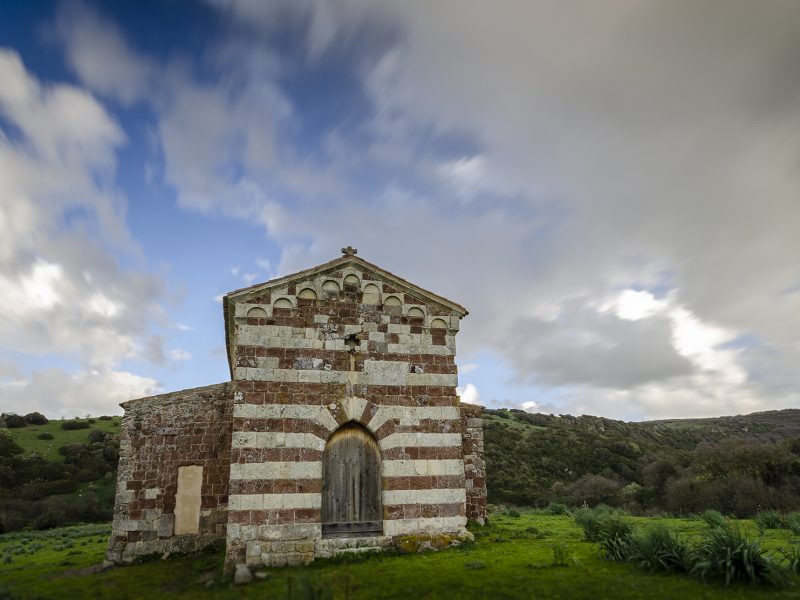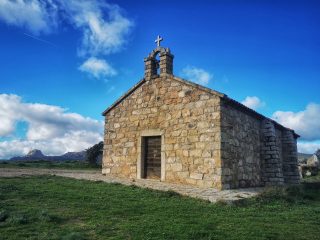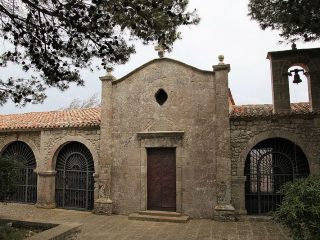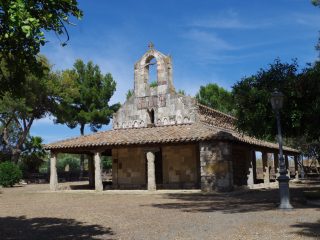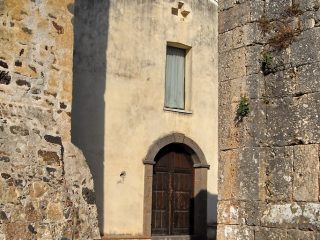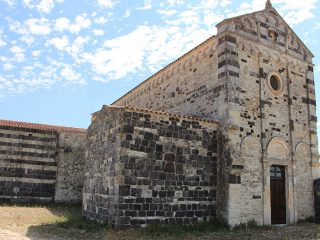According to the expert Angius, the church took its name from the ancient village, now abandoned of Orria Pithinna, where it presumably acted as the parish church.
The building was definitely completed prior to 1205 as it is mentioned in a gift deed by the aristocrat Maria de Thori from the Turritano region, and aunt of the Judge of Torres Comita II, to the abbey of San Salvatore di Camaldoli. The two side chapels (one on either side) were added at a later date; the year 1323, engraved on an internal shelf, indicates when it was completed.
The church has a two-tone facade made up of rows of trachyte and limestone blocks and is embellished by a small cross-shaped window. Furthermore, there are limestone arches under the gable slopes. The inscription on the facade bears witness to the important work done in 1335 by the Magister Petrus Conthu, under the priorate of Cenus. Another interesting inscription, found outside the south chapel, informs us of the presence of the grave of a mysterious San Autedus.
The church has a variety of graffiti work and lapidary markings including: the “pilgrim’s footprints”, a Sardinian dance scene and a Medieval labyrinth.


